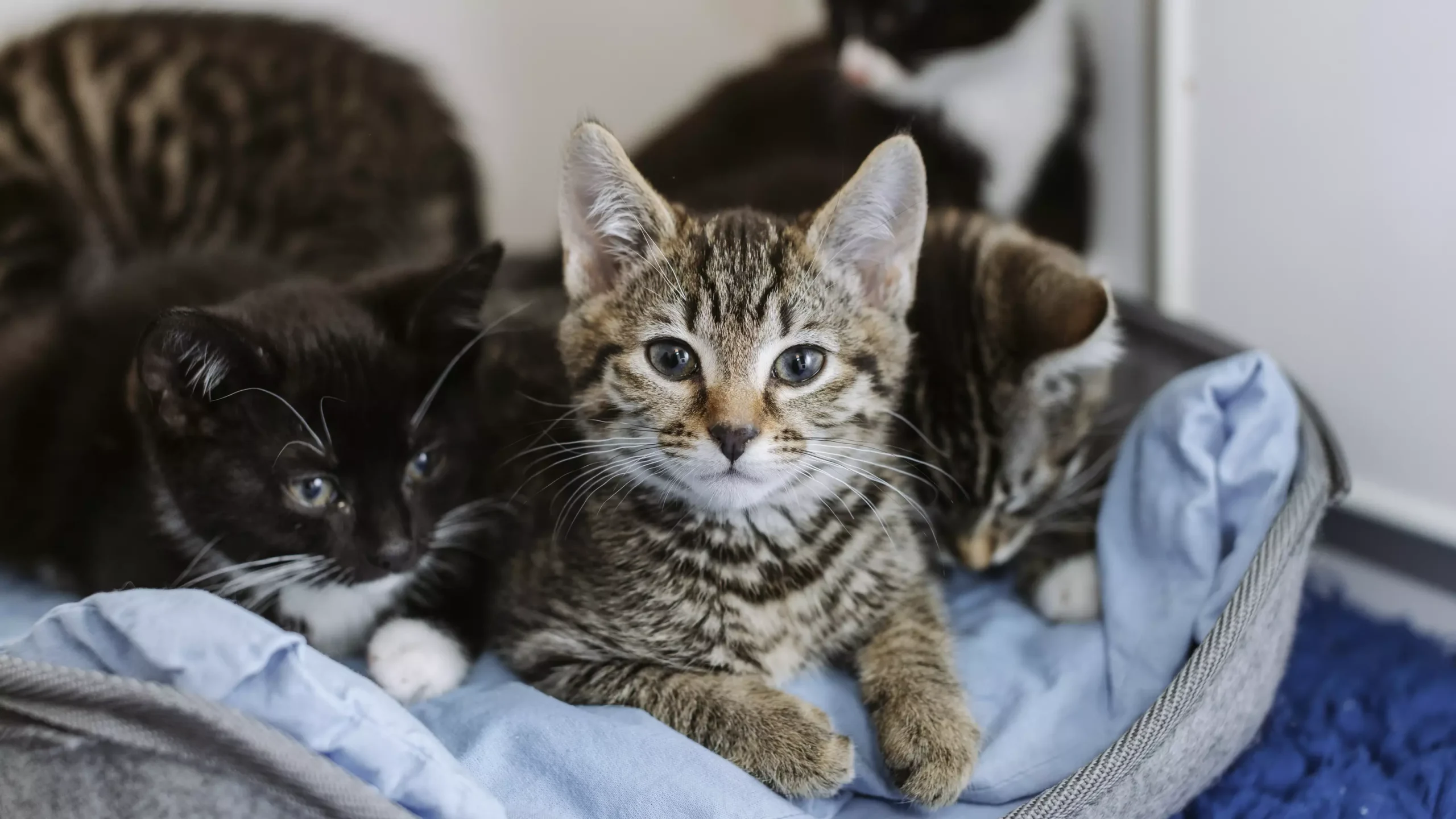
Fleas are one of the most common external parasites affecting cats. They can cause significant discomfort, leading to itching, irritation, and even more severe health issues like flea allergy dermatitis or anemia.

Treating flea infestations promptly and effectively is essential to maintaining your cat’s health and well-being.
This guide will explore the most effective flea treatments for cats, covering a variety of options such as topical treatments, oral medications, collars, and natural remedies.
Understanding Fleas in Cats
Fleas are small, wingless insects that feed on the blood of mammals, including cats. Fleas are incredibly prolific; a single female flea can lay hundreds of eggs in her lifetime, and these eggs often fall off your cat and hatch in your home, leading to ongoing infestations. Fleas are not only bothersome but can also transmit diseases and parasites, such as tapeworms, to your cat. Additionally, flea bites can trigger allergic reactions in some cats, leading to itching and inflammation.
The main symptoms of flea infestation in cats include:
Excessive scratching, biting, or licking: Cats with fleas will often scratch and bite themselves in an attempt to relieve the itching caused by flea bites.
Hair loss and skin irritation: Constant scratching or biting can lead to bald spots, red inflamed skin, and even sores.
Flea dirt: Flea feces, which appears as small black specks (like pepper), is often found on your cat’s fur or bedding.
Visible fleas: Adult fleas are tiny but visible to the naked eye, moving quickly through your cat’s fur.
Since fleas can cause a range of health issues, timely intervention is crucial to keep your cat comfortable and prevent more serious conditions.
Types of Flea Treatments for Cats
There are several flea treatments available on the market, and each has its own advantages and disadvantages. Let’s explore the most effective flea treatment options for cats, covering their benefits, application methods, and potential drawbacks.
1. Topical Flea Treatments (Spot-on Treatments)
Topical flea treatments, also known as spot-on treatments, are applied directly to your cat’s skin, typically between the shoulder blades. These treatments are effective in killing adult fleas and preventing future infestations. They often contain insecticides that target the flea nervous system.
Popular Topical Flea Treatments for Cats:
Frontline Plus: This is one of the most widely used flea treatments. It contains fipronil, which kills adult fleas, and (S)-methoprene, an insect growth regulator (IGR) that stops the development of flea eggs and larvae.
Advantage II: Advantage II uses imidacloprid, which kills fleas on contact before they can lay eggs. It also contains pyriproxyfen, an IGR that prevents eggs from hatching.
Revolution: Revolution is a broad-spectrum treatment that not only kills fleas but also protects against heartworms, ear mites, and some other parasites. It contains selamectin, which disrupts the flea nervous system.
Capstar: While not a long-term solution, Capstar works quickly to kill adult fleas. It is often used for quick relief, especially in cases of severe flea infestations.
Pros:
- Easy to apply (typically once a month).
- Can kill both adult fleas and their eggs.
- Some treatments also target other parasites, such as ticks or mites.
Cons:
- Requires reapplication every 30 days.
- May cause irritation or adverse reactions in some cats, though this is rare.
2. Oral Flea Medications
Oral flea medications are taken by your cat to target fleas internally. These medications are absorbed into your cat’s bloodstream, where they kill fleas that feed on their blood. Oral flea medications are particularly beneficial if your cat is difficult to apply topical treatments to or if you prefer a systemically acting option.
Popular Oral Flea Medications for Cats:
Capstar (Nitenpyram): Capstar is an oral tablet that works rapidly to kill adult fleas within hours. It is often used in conjunction with other treatments for immediate relief.
Comfortis: Comfortis contains spinosad, which works by targeting the fleas’ nervous system and killing them quickly. It lasts for about a month, and it starts killing fleas within 30 minutes.
Bravecto: Bravecto provides long-lasting flea protection, lasting up to three months with just one dose. It contains fluralaner, which kills fleas and ticks.
Pros:
No risk of skin irritation or allergic reactions as with topical treatments.
Long-lasting, with some medications providing protection for up to three months.
Works systemically, making it more effective for severe infestations.
Cons:
Requires your cat to swallow a pill, which can be challenging for some pet owners.
Some medications may cause gastrointestinal issues, such as vomiting or diarrhea.
3. Flea Collars
Flea collars are another effective option, and many modern flea collars use advanced technology to provide continuous, long-term flea protection. Flea collars can be especially helpful if your cat spends time outdoors or in areas where fleas are prevalent.
Popular Flea Collars for Cats:
Seresto: The Seresto collar is one of the most popular flea collars for cats. It uses imidacloprid and flumethrin to kill fleas and ticks for up to eight months. The collar is water-resistant and safe for most cats.
Hartz UltraGuard Plus: This is an affordable option that kills fleas, ticks, and mosquitoes. It provides up to seven months of protection and is suitable for cats over 12 weeks old.
Pros:
- Provides long-lasting protection (up to 8 months with some collars).
- Convenient and easy to use.
- Continuous protection without the need for reapplication every month.
Cons:
- Some collars may irritate your cat’s skin or fur.
- Cats with sensitive skin may be allergic to the materials in the collar.
- Not ideal for cats who dislike wearing collars.
READ ALSO: Credelio for Dogs: Safety and Effectiveness
4. Flea Sprays and Shampoos
Flea sprays and shampoos can be used for immediate relief from flea infestations. Flea shampoos are especially useful when dealing with an active flea outbreak, as they kill fleas on contact. Flea sprays, on the other hand, can be used on your cat’s fur or in the environment to kill fleas and their eggs.
Popular Flea Sprays and Shampoos for Cats:
Vet’s Best Flea and Tick Advanced Strength Shampoo: This shampoo combines natural ingredients like peppermint oil and eugenol to kill fleas on contact and soothe irritated skin.
Adams Plus Flea and Tick Spray: This spray kills fleas, flea eggs, and ticks on contact. It can be applied directly to your cat’s fur or used in the environment to target flea eggs and larvae.
Pros:
- Provides immediate relief from fleas.
- Flea shampoos are a great option if your cat has an active flea infestation.
- Some sprays can be used in the home environment.
Cons:
- Shampoos only provide temporary relief and must be reapplied regularly.
- Flea sprays may be messy and can irritate some cats’ skin if not used properly.
5. Natural Flea Remedies
For pet owners looking for natural alternatives, there are a variety of flea treatments that avoid synthetic chemicals. While not as effective in severe infestations, these natural treatments can work well for prevention or mild flea issues.
Popular Natural Flea Remedies:
Diatomaceous Earth (DE): Food-grade diatomaceous earth can be sprinkled on your cat’s coat and bedding. It works by dehydrating and killing fleas, though it takes time to be effective.
Essential Oils: Some essential oils like lavender, cedarwood, and peppermint are known to repel fleas. However, essential oils must be used with caution, as they can be toxic to cats if not diluted properly.
Apple Cider Vinegar: A diluted apple cider vinegar solution can be used to rinse your cat’s coat. It can help repel fleas and soothe irritated skin.
Pros:
- Natural and chemical-free.
- Can be used as a preventative measure.
Cons:
- Less effective than traditional treatments.
- Essential oils can be toxic to cats if not used correctly.
FAQs
How do I know if my cat has fleas?
You may notice your cat scratching excessively, biting or licking their fur, or developing irritated or inflamed skin. You can also check for flea dirt (tiny black specks) on your cat’s fur. If you’re unsure, your veterinarian can perform a thorough examination and confirm whether fleas are the cause.
How often should I treat my cat for fleas?
The frequency of flea treatment depends on the product you choose. Topical treatments and oral medications generally need to be reapplied every 30 days, while flea collars can provide up to 8 months of protection. Be sure to follow the instructions on the product for the best results.
Can fleas affect my cat’s health?
Yes, fleas can cause a variety of health problems. They can lead to itching, hair loss, and skin infections. Flea infestations can also cause anemia in severe cases, particularly in kittens or older cats. Additionally, fleas can transmit other parasites like tapeworms.
Are natural flea remedies safe for cats?
While natural remedies may be less harsh than chemicals, they should still be used cautiously. Some essential oils can be toxic to cats, so it’s important to consult with your veterinarian before using any natural treatments. Always ensure that any products you use are safe for your cat.
Can I treat both my cat and my home at the same time?
Yes, treating both your cat and your home is essential to fully eliminate a flea infestation. While your cat may have fleas, they can leave eggs in your home. You may need to use flea sprays or powders in your home, wash your cat’s bedding, and vacuum regularly to eradicate the entire infestation.
Leave a Reply
You must be logged in to post a comment.